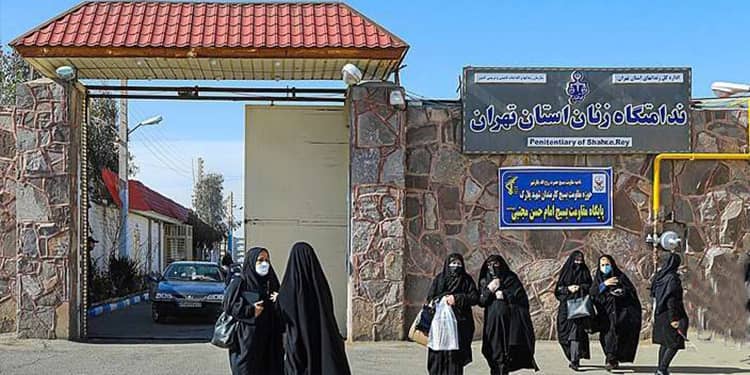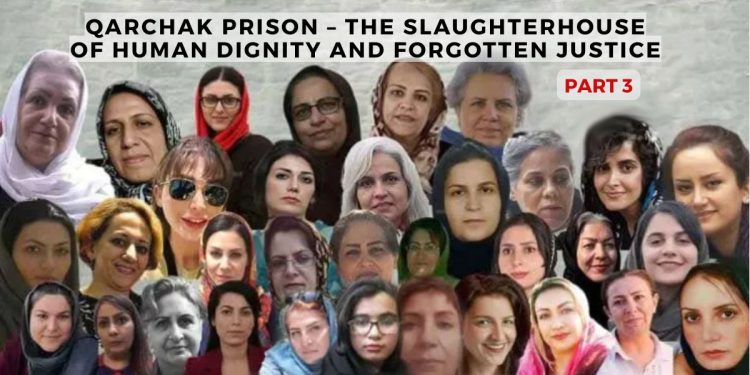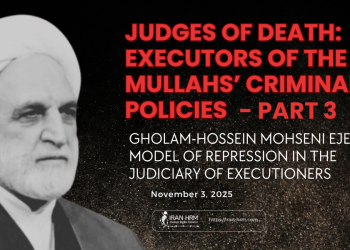Qarchak Women’s Prison in Varamin, officially known as “Shahr-e Rey Penitentiary,” is today recognized as one of the most infamous prisons for women in the world. The facility was not designed according to correctional standards but rather as a place of humiliation and psychological and physical torture. Originally an abandoned poultry farm, it was later used as a men’s addiction camp before being handed over to the judiciary and converted into a women’s prison without any fundamental modifications. This history itself symbolizes the regime’s disregard for human dignity. The general conditions of this prison – extreme overcrowding, undrinkable water, contaminated food, and infestations – reveal that it was built not for rehabilitation but for breaking human beings.
Overcrowding and Inhumane Space
Qarchak consists of 11 warehouses, each divided into narrow corridors and small cubicles. Its official capacity is 500, yet more than 1,200 prisoners are held there. Some halls designed for 200 inmates house up to 600.
This severe overcrowding forces many women to sleep on the floor (“floor-sleeping”). With insufficient beds, dozens are compelled to spend nights on filthy cement floors, leading to serious health problems and frequent clashes among prisoners. Authorities deliberately use overcrowding as a tool of psychological pressure. Reports also indicate that ordinary prisoners are incentivized to spy on or harass political prisoners in exchange for privileges.
Sanitation and Environmental Crisis
Hygiene conditions in Qarchak are catastrophic. The constant stench of sewage permeates the entire prison, even the outdoor yard. Walls are stained with blood, vomit, and feces, with no cleaning measures taken by authorities.
Vermin such as rats, cockroaches, poisonous tarantulas, and salamanders are widespread in the wards, severely endangering the health of inmates.

Water Crisis and Malnutrition
One of Qarchak’s gravest problems is its water crisis. The local water is saline and undrinkable. Prisoners are forced to buy bottled water from the prison store at prices about 40 times higher than the market rate. Even then, it is not consistently available.
Unsanitary water for bathing causes widespread skin diseases. The number of toilets and showers is grossly insufficient for hundreds of inmates, and hot water is available only during limited hours.
Food quality is also abysmal. Meals typically consist of half-cooked rice with potatoes or lentils. Red meat and chicken are eliminated from the diet, while fruit and dairy are rarely provided. This chronic malnutrition gravely threatens women’s health.
The prison store sells food and medicine at exorbitant prices, forcing inmates to cover basic needs at unbearable costs. This corrupt system is a revenue source for prison officials.
Denial of Medical Care
Although denial of medical treatment will be examined in detail separately, it is integral to the overall prison structure. Sick women in Qarchak are systematically deprived of access to doctors or hospitals.
One tragic example is Farzaneh Bijanipour, who died after being returned from the infirmary with accusations of “malingering.” This shows that even the prison clinic functions as part of the torture apparatus.
Legal Analysis
The general conditions of Qarchak constitute blatant violations of Iran’s international obligations:
• Article 10 of the ICCPR: Requirement of humane treatment of prisoners.
• Article 7 of the ICCPR: Prohibition of torture and cruel treatment.
• Article 12 of the ICESCR: Right to the highest attainable standard of health.
• Article 11 of the ICESCR: Right to an adequate standard of living (food, safe water, housing).
• Nelson Mandela Rules: Obligations to separate categories of prisoners, maintain hygiene, provide safe drinking water and food as basic rights.
Human and Social Impact
Women in Qarchak face daily exposure to infectious diseases, food poisoning, and skin problems caused by contaminated water. Chronic malnutrition leads to weakness, anemia, and worsening of pre-existing conditions.
Families of inmates also suffer immense financial strain due to the inflated costs of food and water in the prison store. This reflects a systematic policy aimed at the gradual erosion of women prisoners and their families.
Conclusion and Call to Action
The structure and general conditions of Qarchak show that it is not a detention facility but a “camp of slow death.” Water and food crises, extreme overcrowding, catastrophic hygiene, and systemic corruption have turned life into a real hell for prisoners.
We call on the UN High Commissioner for Human Rights and all human rights organizations to:
• Conduct immediate investigations into living conditions in Qarchak.
• Compel the Iran regime to shut down this prison and transfer inmates to facilities that meet minimum international standards.
• Prosecute judicial and security officials responsible for these inhumane conditions.







